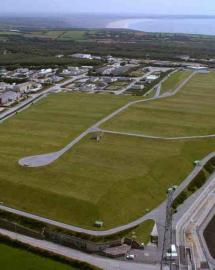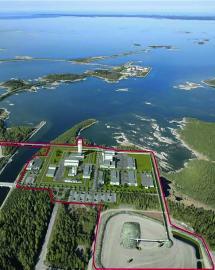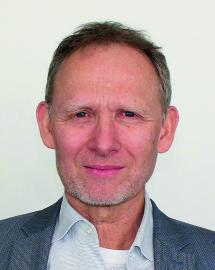A collective international dynamic for the disposal of radioactive waste
Very rigorous radioactive waste management organizations exist around the world. While some countries are more advanced than others, all are converging on the same solutions, and very significant progress has been made in recent decades. Here is a panorama.
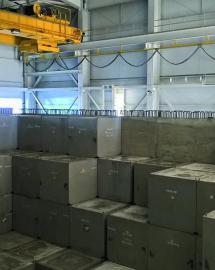
Where does the radioactive waste produced on our planet come from? Most of it comes from the 452 nuclear reactors in operation around the world. They produce three types of radioactive waste: waste related to their operation and maintenance such as clothing, tools, scrap or rubble (mostly low activity with short life [LLW] and very low level[VLLW]), spent nuclear fuels and waste from their reprocessing where countries have made this choice (intermediate level (ILW) and high-activity waste [HA]), finally decommissioning waste nuclear installations (mainly TFA and FMA-VC).
Not all countries produce nuclear energy, however, all however use radioactivity in other sectors of activity which also generate, sometimes indirectly, radioactive waste: defense, research, the medical sector and industry. "Low and intermediate level short-lived waste is by far the largest volume of radioactive waste produced in the world," said Stefan Mayer of the International Atomic Energy Agency (IAEA). The most dangerous waste (HA) amounts to a very small percentage of this volume, but concentrates almost all of the radioactivity, as is the case in France. "
Various contexts of implementation
While the vast majority of countries have selected a classification of waste according to their level of activity (very low, low, medium or high activity) and their lifetime (very short, short or long), several factors influence the disposal implementing long-term management of radioactive waste.
Firstly, the number of reactors. Higly variable from one country to another, it implies more or less large inventories of waste to manage. There are, for example, 99 reactors in operation in the United States, one in Armenia, Iran or the Netherlands. France, for its part, had 58 nuclear reactors in operation at the end of 2019. In addition, some countries have made the choice to reprocess spent fuel from nuclear power plants for partial reuse (thus 96% are extracted and managed as recoverable material and 4% considered as waste), others consider spent fuel entirely as ultimate radioactive waste. The geological environment also conditions the mode of disposal: clay, granite, salt or limestone, located at greater or lesser depth… Finally, the energy policies are an important factor in the development of radioactive waste management strategies . At a time when some countries are lanning to discontinue production of nuclear energy (South Korea, Belgium, Switzerland and even Spain) others are developing or starting their nuclear power program: China, the United Arab Emirates, India, Egypt, Saudi Arabia, Turkey …
But whatever their technical and political choices, everyone is mobilized around a common responsibility: ensuring the safe management of radioactive waste, as Daniel Delort, manager of Andra's international relations department observes: “New entrants to the nuclear power industry integrate the problem of long-term waste management very early on. The countries which are not nuclear-powered and which therefore cannot count on future nuclear financial resources to manage their radoactive waste, decide to act now and get involved ininternational research programs and projects: lAustralia, Malaysia, Norway. Likewise, countries that have decided to phase out nuclear power and to dismantle their power plants in the short or medium term are actively continuing or relaunching their radioactive waste management programs. "
Converging solutions
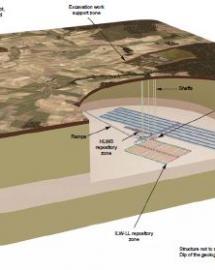
From the start of the use of nuclear technologies, sixty years ago, the nuclear countries have gradually engaged in a reflection on the management of radioactive waste. "Today, we have the experience and the skills to implement very rigorous radioactive waste management systems," notes Stefan Mayer. In the vast majority of cases, it leads to the adoption of two solutions: surface disposal for VLLW and LLW waste and geological disposal for the most dangerous waste, ILW and HLW. "This is the case in France, but it is generally the benchmark almost everywhere else. "
-
Geological disposal: the benchmark solution for HLW and ILW waste
For the management of HA and MA-VL radioactive waste, deep geological disposal is today the baseline solution in France. It is also the solution accepted by the scientific community and major international bodies (European Commission, IAEA, Agency for Nuclear Energy [NEA]). "It is indeed the most advanced solution and the one that provides the most assurance for a long-term safety demonstration. No alternative makes it possible to have the same guarantees of safety on such time scales, "underlines Daniel Delort.
Strategic choices regarding spent fue made by each country determine the disposal solution: deep disposal of spent fuel encapsulated in copper containers after a period of cooling in storage (Finland, Sweden); reprocessing, as in France where this type of operation allows separating recoverable materials (plutonium, uranium) - to reuse them in part - from the ultimate residues (ILW and HLW waste) which will be disposed in a deep facility.
Pending the completion of geological disposal projects, HA and MA-VL waste are most often stored on their production sites.
The Waste isolation Plant (NM-USA)
Opened in the United States in 1999, in New Mexico, in a salt geological formation 700 m deep, the WIPP (Waste Isolation Pilot Plan) is currently the only facility in operation in the world for the disposal of some of the most dangerous radioactive waste (transuranic waste, or waste contaminated by radioactive elements with an atomic number higher than that of uranium) in a geological layer. The facility is however reserved for the waste produced by the USA military program.
In February 2014, two accidents resulted in the automatic safety shutdown of the site and the temporary suspension of its operation. The US Department of Energy authorized a restart of WIPP at the end of 2016, after confirming that there was no significant impact outside the installation and that all corrective measures had been taken (accident report and safety review, reinforcement of operating rules, installation restoration plan, etc.). The lessons learned from this event were integrated into the design studies of the Cigeo project.
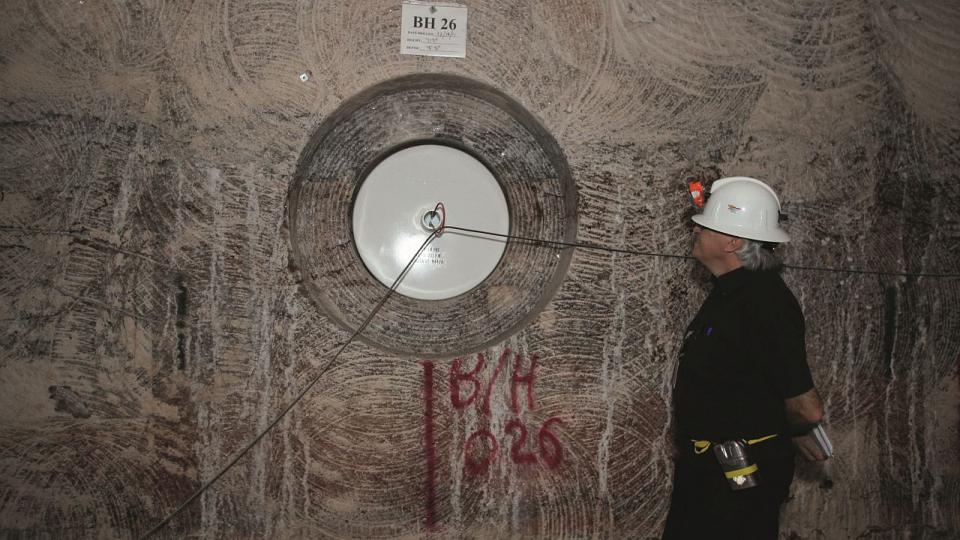
Europe, a step ahead
Finland, Sweden and France are the three countries with the most advanced geological disposal projects today. The construction of the first deep repository, Onkalo, started in Finland in a granite rock, in 2016. In Sweden, the company that manages radioactive waste (SKB) in 2011 submitted its construction authorization application dossier for storage in granite. In 2018, the local safety authority issued
a favorable opinion while the environmental court recommended further studies on the long-term behavior of copper containers. SKB has communicated the results of its additional studies and it is now up to the Swedish government to make a decision based on these recommendations. In France, Andra is preparing to file the authorization for the creation of the Cigeo industrial geological disposal facility.
In other countries, programs are under study. Canada, the United Kingdom, Japan and Switzerland are, for example, engaged in a site selection process. Finally, in some countries where the volumes of waste are low, it is stored over several decades, pending better visibility on the future of nuclear energy and geological storage.
A very active international research
Some of the scientific and technological research concerning deep disposal is carried out from underground laboratories. Some countries already have their own facilities. This is the case in particular of the most advanced countries such as Finland (Onkalo laboratory of Posiva), France (Andra laboratory in Meuse / Haute-Marne) or Sweden (Aspö laboratory of SKB), but also, Switzerland (the laboratories at Mont Terri and Grimsel), Belgium (Hades laboratory of the economic interest group Euridice, at Mol) or even Japan (laboratory at Horonobe and Mizunami of the JAEA). The studies and research carried out in these laboratories aim to understand the host rock (clay or granite) and the interactions between the future components of the repositories, as well as the development of technologies necessary for their construction and the future operations and closure phases.
Other laboratories are planned or under construction, for example in China or Russia, with the longer-term objective of designing underground disposal facilities. Despite different situations, these different countries all concur that, by 2050, they will operate a laboratory or disposal facility.
A word from ... Stefan Mayer
Team Leader - Radioactive Waste Management, International Atomic Energy Agency (IAEA)
“Exchanges and transfers of knowledge between countries have made it possible in recent decades to deal with radioactive waste in an extremely rigorous global management system. It requires close cooperation between waste management agencies and companies that use nuclear technologies. This is the great lesson of the past twenty years. Developing a long-term disposal program requires first of all tthe assessment of its long-term safety and security , but also to place he project in a normative and societal context. The most advanced programs have demonstrated this.
It is essential that the development of these projects and the decisions related to them take place withina clear legislative frameworks which closely take into account the rights and responsibilities of the various stakeholders. This is a condition now well understood and accepted by the organizations that carry out these programs, but each country must find tits own way to do it. "


